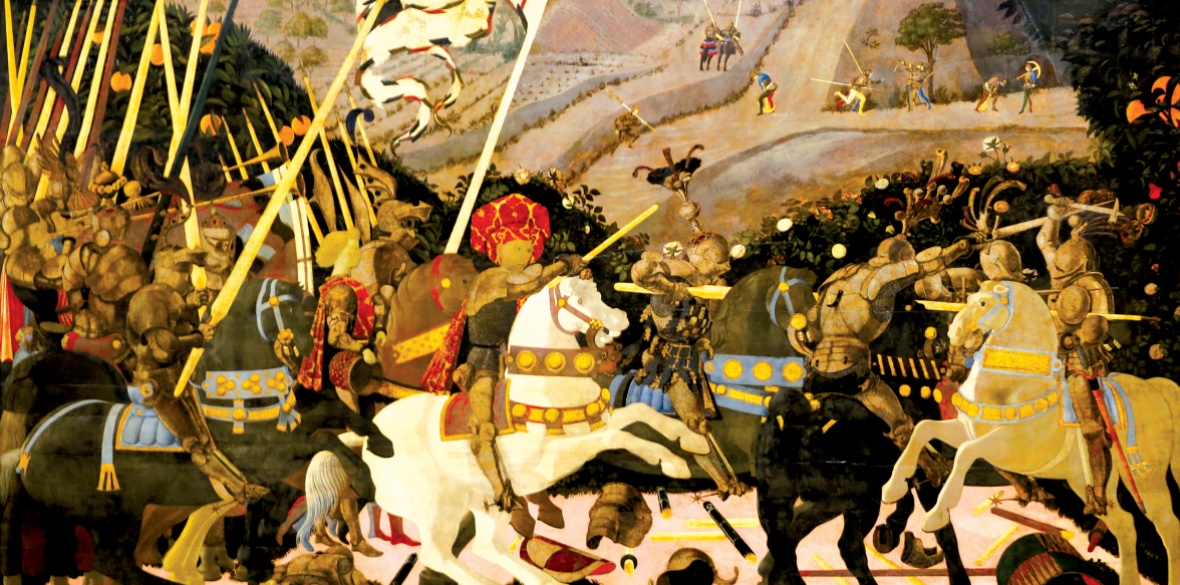This is the last article you can read this month
You can read more article this month
You can read more articles this month
Sorry your limit is up for this month
Reset on:
Please help support the Morning Star by subscribing here
WHEN the wife of 15th-century Fiorentine painter Paolo Uccello would implore him to come to bed at night, he would exclaim: “Oh what a lovely thing this perspective is!” and carry on working until the crack of dawn.
He was trying to discover the Holy Grail of the “vanishing point,” which in perspective drawing represents the mutually parallel lines in three-dimensional space which appear to converge.
The Uccello story, probably apocryphal, was told a century later by Giorgio Vasari in his remarkable Lives of the Most Excellent Painters, Sculptors and Architects. It is, to this day, considered the methodological foundation of writing on art history.
Uccello’s obsession was hard on his wife and might possibly have given her good enough grounds for divorce.
But it helped shift painting away from the hierarchical and ossifying canon of Europe’s Medieval Period into the exciting adventure of the Renaissance (rebirth), the term coined by Vasari himself.
It was the bubonic plague that ushered in the Renaissance and it proved to be the final nail in the coffin of feudalism — might coronavirus do the same for capitalism, one wonders?
The Renaissance saw the rapid expansion of trade routes to Asia, widening horizons well beyond the dominant city states of the Apennine Peninsula in Italy.
And the emergence of archaeology and, with it, interest in classical Greek and Roman culture and philosophy, played a part in the subsequent rise of the secular humanism which challenged the Christian dogmatism that sustained feudalism ideologically.
Uccello and his native Florence were at the very heart of these momentous transformations, which took Europe by storm. His single-minded obstinacy resulted in some notable paintings that straddle the old and the new with intriguing visual results.
The Battle of San Romano, on view at the National Gallery in London, and The Funerary Monument to Sir John Hawkwood, a 1436 fresco in Santa Maria del Fiore in Florence, are the most pertinent in this regard.
Hawkwood was an unsavoury English mercenary at the service of the peninsular city states in Italy, who infamously helped put down the Revolt of the Ciompi (1378-1382), an uprising by the politically unrepresented labourers of Florence sparked by underemployment, high taxes and mounting debts and the mass murder of the people of Cesena in 1377.
The Hawkwood fresco (pictured) has, somewhat disconcertingly, two different but simultaneous perspectives, with the horse and rider painted at eye level to the viewer, while the plinth is viewed from a low angle.
With it’s exquisitely precise execution, it is regarded as a seminal rendering of perspective, while in the Battle of San Romano (pictured) Uccello applied the technique predominantly in the strewn broken lances in the bottom third of the canvas.
It demonstrates that he did not use it for the purpose of realism but, as Vasari commented, it was “placed in an unnatural, fantastic overall atmosphere, of his complex and unique imagination.”
Yet while perspective was Uccello’s venerated mistress he remained steadfastly wedded to the late Gothic movement, despite the growing influence of the Renaissance in visual art.










